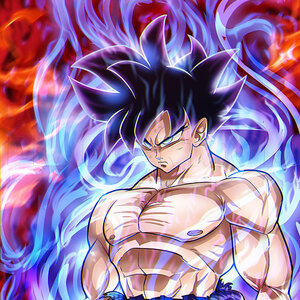1
Before starting, take the time to look at the subjects face you are going to draw and break it down into a basic shapes, like I have done in the first step. We are not looking for an EXACT shape, just the over-all feel of a person's head! Some people
2
I have decided to use a peanut-shaped head for this tutorial. I start by drawing a circle on top, then making a slightly larger circle on the bottom. I then join the circles with two curved lines.
3
Depending on what shape you use for a person's head, the following guidelines will change. As we have done with the basic shape of the head, we will do the same with the basic shapes of the face.
4
Does the person have a large nose? Large eyes? Or perhaps there are features that are small, and not large! We are looking for relationships between shapes! "Relationships" is the most important idea here. How large does the nose appear to the res
5
Once you have decided on the basic shapes of your subject, it is time to further define those shapes. Keep in mind we don't actually "see" these shapes when we look at a real person's face. We do, however, break it down into shapes to better understa
6
Again, here I am adding on to the basic shapes I have already put down on the person's face. Once you have the basics down, it becomes easier to slowly add more detail.
7
What we have so far is good. However, I think we can further exaggerate these features, which is what I am doing with the RED pencil. (Keep in mind that you can exaggerate a person's features to extreme levels- although this does take quite a bit of
8
Once we have built upon our basic shapes and have added a bit of detail, we can erase our basic shapes and guidelines we used! This should make things easier to follow.
9
Before we decide to do any sort of shading or coloring on our subject, we must decide where our light source is coming from. While it is not always necessary to have a light source, it is still important to learn this step! I have decided to put the
10
I begin by lightly shading the left side of the face. Generally speaking, there will be some shadow on every "left part" of the face. This also includes areas where there would be little light (even with or without a light source), such as the inside
11
Here I am just darkening the areas that would have little to no light. Like everything else, studying light sources does take a bit of practice. I also shade in the areas of the face that would always be slightly dark, such as the eye lids, hat and l
12
Once you get the hang of shading and light sources, you can move on this optional step: Line work and inking. Line quality CAN be very important in caricature work. It is most common in "street caricatures"- the kind you would see at a theme park.
13
Like line quality and ink, coloring is also optional. I do recommend trying this though, because it can really help bring your caricatures to life! In this step, I am using colored pencil. Personally, I like to study the BASIC color of a persons f
14
Once you have decided on the basic color(s) of the person's face, you can then start laying colors as you wish. In this example, I have added pinks and light reds to the man's nose and ears. I have also added yellow to the right side of his face, to
Comments 0
Details
October 8, 2012
Description: Hey there! This is a simple tutorial on how to draw caricatures. Please keep in mind that there are many different styles of caricature, and even more ways to draw them! Some are cartoony, and others are quite realistic. I am going to use a basic "cartoony" style for this example.









































































